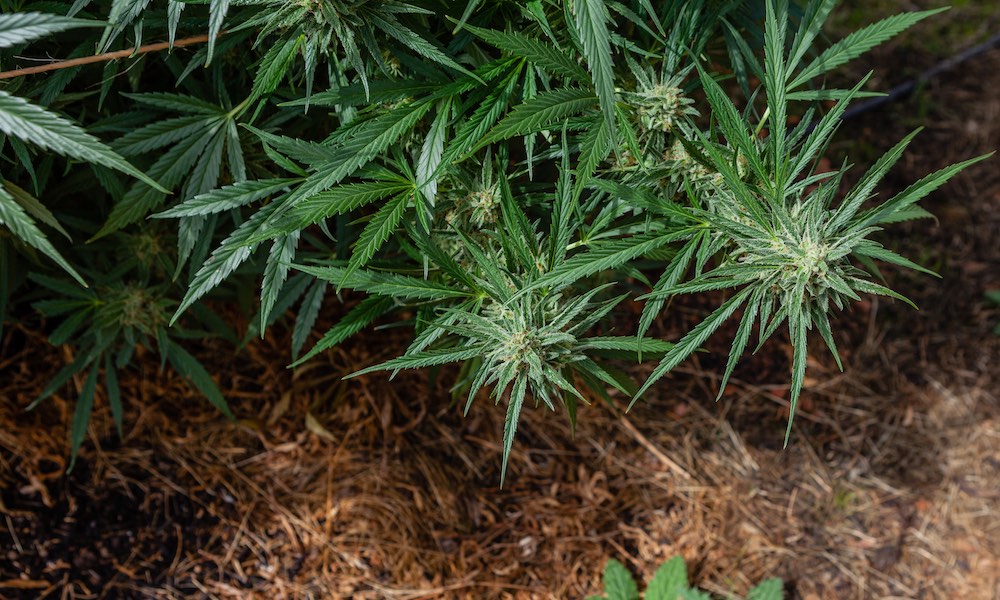On May 31, Santa Barbara County, the stretch of coast about two hours north of Los Angeles once best-known for wine grapes, if at all, took the extraordinary step of attempting to explain itself to its own citizens.
“Every land use issue in Santa Barbara County is controversial,” reads the open letter sent that day, in part. This is probably true — it is one of those banal statements that is true anywhere people squabble over property, which is everywhere — but no land-use issue other than commercial cannabis has triggered so much animus.
And certainly only cannabis has welcomed the world’s two largest marijuana grows to Santa Barbara County, the 21st-largest of California’s 58 counties, but home to 35% of the state’s officially sanctioned cannabis crop.
The open letter preceded an in-depth piece on the county’s cannabis industry published by the Los Angeles Times on June 12. As the Santa Barbara Independent wrote after the article’s publication, it was an “open secret” that the Times was on it — and it was also somewhat obvious what the Times was on.
Most everyone in the county was well aware that cannabis companies are plotting a 147-acre grow and a 83-acre grow — the world’s two largest grows by size — and if Santa Barbara residents weren’t exactly apprised of the facts that growers have applied to cultivate more than 1,400 acres of cannabis in the county (and that only 1,100 acres are required to meet all of the current statewide demand, as per one estimate) they were at least familiar with the broad strokes. Hence the open letter.
In the letter, county officials stressed all the illegal marijuana that sheriff’s deputies and other authorities had cut down and hauled away. They also highlighted the fiscal benefits a new industry presents in the form of jobs and tax dollars. If all goes to plan, weed cultivation could glean Santa Barbara $40 million in tax revenue and that’s just in fees for land under till.
What they did not address, beyond oblique references to a “public” process that addresses the concerns of various “stakeholders,” is how pissed off those stakeholders currently are at the county.
The Times did highlight the extremely cozy relationship between the cannabis industry and a pair of Santa Barbara County supervisors who did most everything in their power to welcome the industry to the county. Together they fingered a loophole in state law that allowed cannabis corporations to acquire hundreds of licenses intended for small growers and “stack” them in order to create one enormous cannabis grow comprised entirely of “small” permits as an inciting factor.
Existing industry in Santa Barbara County is agriculture, wine and tourism. In the case of the wine industry, still enjoying the fruits of the marketing boon that was the 2004 Paul Giamatti film “Sideways,” it is all three — and cannabis is causing it significant grief.
Tyler Thomas is the winemaker at Dierberg. The winery is enclosed on all sides by land permitted for cannabis cultivation, the newspaper reported. As Thomas told the paper, all that weed creates an overwhelming order that “is a deterrent to other animals and humans.”
Also left unaddressed in the county letter, but featuring prominently in the Times article, are the cannabis industry’s unique pesticide restrictions. From a consumer standpoint, some of the toughest standards every applied to the commercial use of critter-killing toxins sound good — one popular pesticide used in agriculture turns into a toxic gas when heat is applied — but woe be the farmer who watches a hoop house rise next door.
They may find themselves in the position of Sharyne Merritt, an avocado farmer who says that she will lose “half the value of her crop” because she can’t spray like she used to. If she does, she may be held liable for the drop in value of the nearby cannabis crop, where her pesticides will migrate via the winds, even though her 13 acres of avocados were under cultivation before the weed.
Also left unsaid in the county’s open letter is whether any of this will work long-term. As the Times article pointed out, what’s permitted to grow in Santa Barbara County could likely supply the entire state of California with cannabis. Whether the entire state of California wants that cannabis — well, nobody can say. But Santa Barbara is taking the gamble and, as it showed in its letter, which ended with the vaguely ominous sign off of “One County. One Future,” it’s happy to double down. There may be no other way out than through.
TELL US, do you have any cannabis grows near where you live?



























